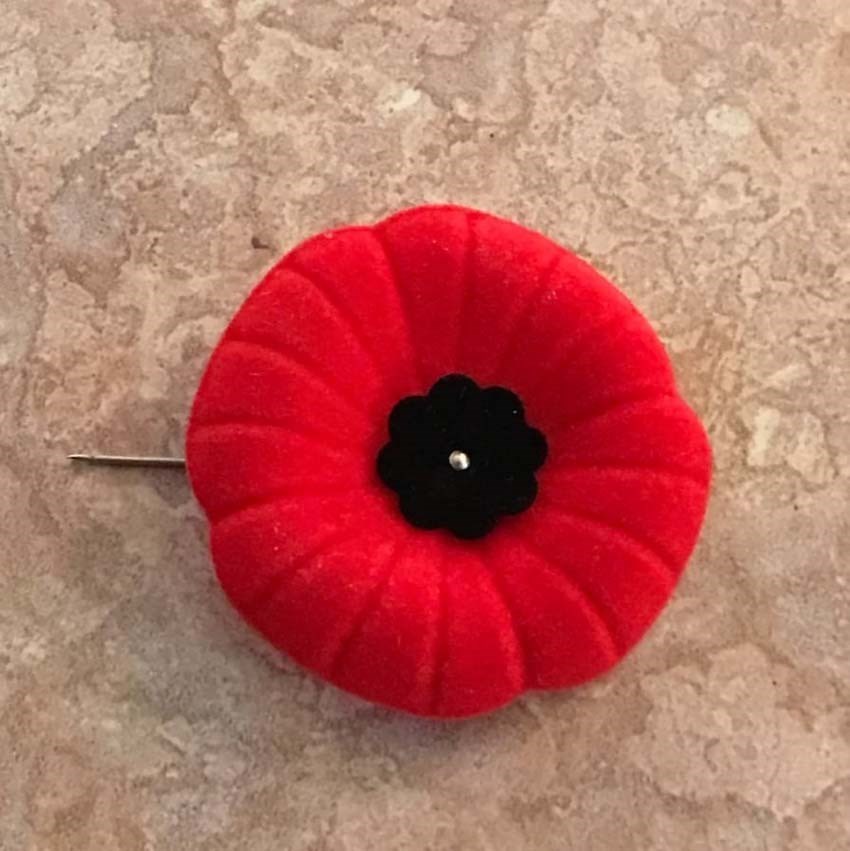In it she explains: “Poppies were a common sight, especially on the Western Front. They flourished in the soil churned up by the fighting and shelling. The flower provided Canadian doctor John McCrae with inspiration for his poem 'In Flanders Fields', which he wrote whilst serving in Ypres in 1915. It was first published in Punch… In 1918, in response to McCrae's poem, American humanitarian Moina Michael wrote 'And now the Torch and Poppy Red, we wear in honor of our dead…'. She campaigned to make the poppy a symbol of remembrance of those who had died in the war. Artificial poppies were first sold in Britain in 1921 to raise money for… the families of those who had died in the conflict. They were supplied by Anna Guérin, who had been manufacturing the flowers in France to raise money for war orphans. Selling poppies proved so popular that in 1922 the British Legion founded a factory - staffed by disabled ex-servicemen - to produce its own. It continues to do so today.”
And this year, the poppy turns 100. Have you seen the beautiful poppy stamp from Canada Post to mark the occasion? It is truly lovely. Please wear a poppy, have a moment of silence, pause for reflection, and remember with thanks a those 117,000 brave souls who died fighting for the freedom we enjoy today. May they all rest in peace and so may we. At the Legion site, www.legion.ca visit the poppy store, where we gardeners can find poppy seeds to create a garden of remembrance at home. The poppy seeds are papaver rhoeas, corn poppies, and are a living tribute. Poppies do very well in our climate and some will reseed themselves. It’s special way to honor, thank and remember.
If you planted some new tulip bulbs this fall, you will be interested to know that tulips are a symbol of gratitude. In 1940, Crown Princess Juliana of the Netherlands, secretly boarded a Dutch vessel bound for Halifax. She and her family found safety in Ottawa for the rest of the war. This kindness of Canada, as well as the bravery of Canadian soldiers who liberated the Netherlands in 1944 and 1945, resulted in a gift of 100,000 tulips from the Netherlands to Canada, and tulip bulbs are still sent each year in friendship and gratitude.
As we know, flowers are such an important part of tribute and remembrance. Please do wear a poppy this week, and take a moment on the 11th to pause and remember all those brave souls who made the ultimate sacrifice for our freedom.
See what’s happening with the Yorkton and District Horticultural Society by visiting us at www.yorktonhort.ca Thank you to everyone at YTW for their fine work each week.
Have a thoughtful Remembrance Day, a day to say thank you to those who have gone, and to those who still serve. “They shall grow not old, as we that are left grow old; Age shall not weary them, nor the years condemn. At the going down of the sun and in the morning: We will remember them. We will remember them.”
Have a good week.





